We all have certain moments in our lives that are forever ingrained in our memory. One such instance for me was visiting the Tuol Sleng Genocide Museum in Phnom Penh, Cambodia.
I’m publishing a trip report from 2013 and most of it I wrote back then while my thoughts were fresh. This particular story, however, I never wrote about. Perhaps for the very same reason it took me a fews days to write it this week.
Visiting sites like Auschwitz, Tsitsernakaberd, or the killing fields of Pol Pot is deeply emotional and not for the faint of heart. So often we read about humanity’s inhumanity, but when we confront with it our own eyes, it casts atrocities in a whole new light.
The Tuol Sleng Genocide Museum started out as a high school. When the Khmer Rouge regime rose to power in 1975, it was converted into Security Prison 21 (S-21). This was but one of over 150 execution centers in the country. Here, families were brought for interrogation, torture, and eventually execution in nearby killing fields.
What kind of a regime does this?
Pol Pot and his followers came to power with a plan to remake Cambodia into a communist paradise. His “Year Zero” plan sought to make Cambodia a classless, agrarian society. Education was banned, books were burned, and citizens were rounded up from cities and put to work in collective farms by threat of force. The plan failed miserably. Famine resulted and thousands died from malaria and other easily treatable diseases because the despotic regime insisted on 100% self-sufficiceny.
The regime was also extremely paranoid, killing anyone (plus the families) thought to be involved in the overthrown government.
This was daily life in the prison–
The day in the prison began at 4:30 a.m. when prisoners were ordered to strip for inspection. The guards checked to see if the shackles were loose or if the prisoners had hidden objects they could use to commit suicide. Over the years, several prisoners managed to kill themselves, so the guards were very careful in checking the shackles and cells. The prisoners received four small spoonfuls of rice porridge and watery soup of leaves twice a day. Drinking water without asking the guards for permission resulted in serious beatings. The inmates were hosed down every four days.
And they were tortured into false confessions…with electricity, waterboarding, and hangings. As many as 20,000 died in Security Prison 21, part of the over one million who perished in the country during the brutal Khmer Rouge era.
The museum has been preserved since 1979 as a memorial. You are free to walk through it and experience it on your terms.
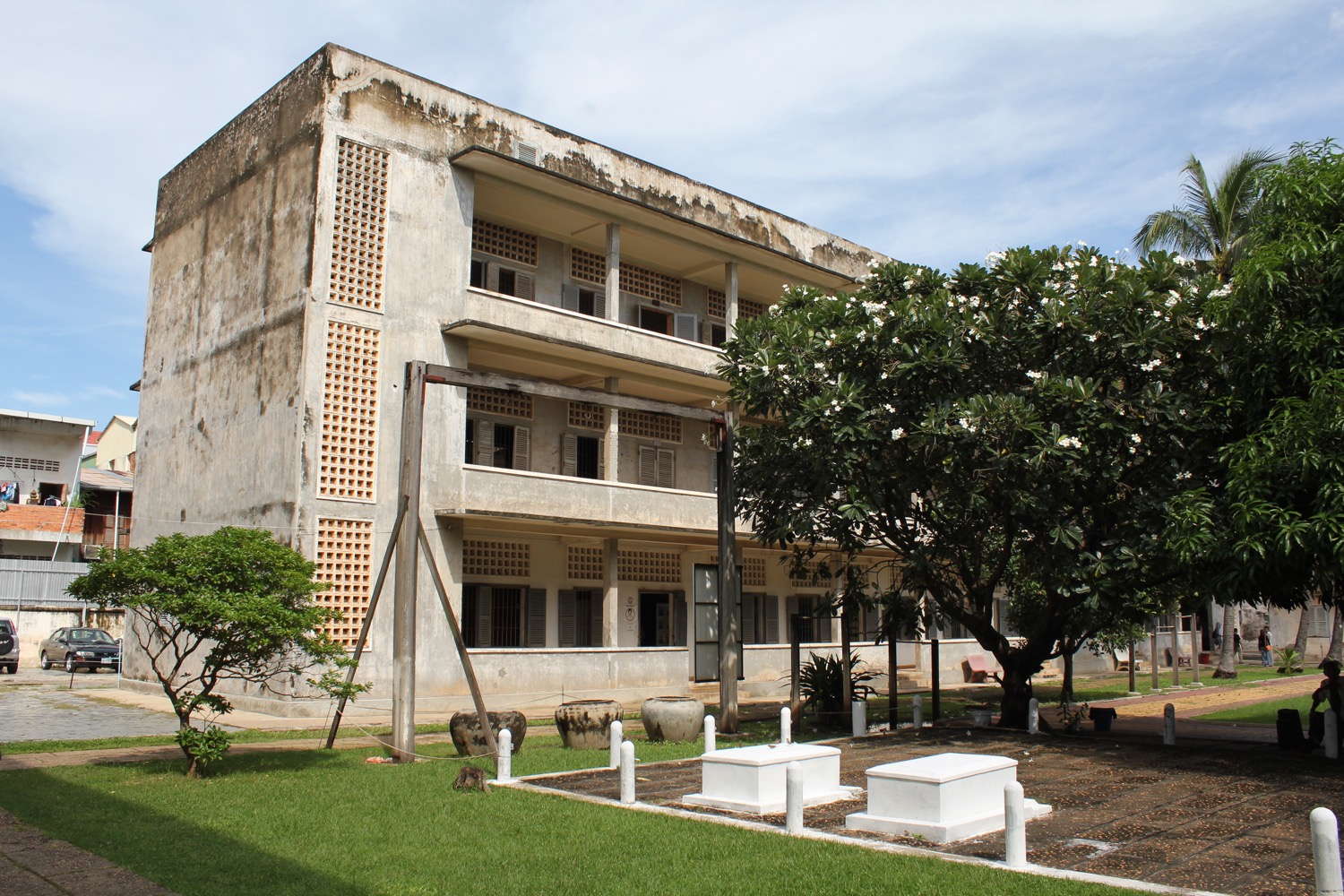
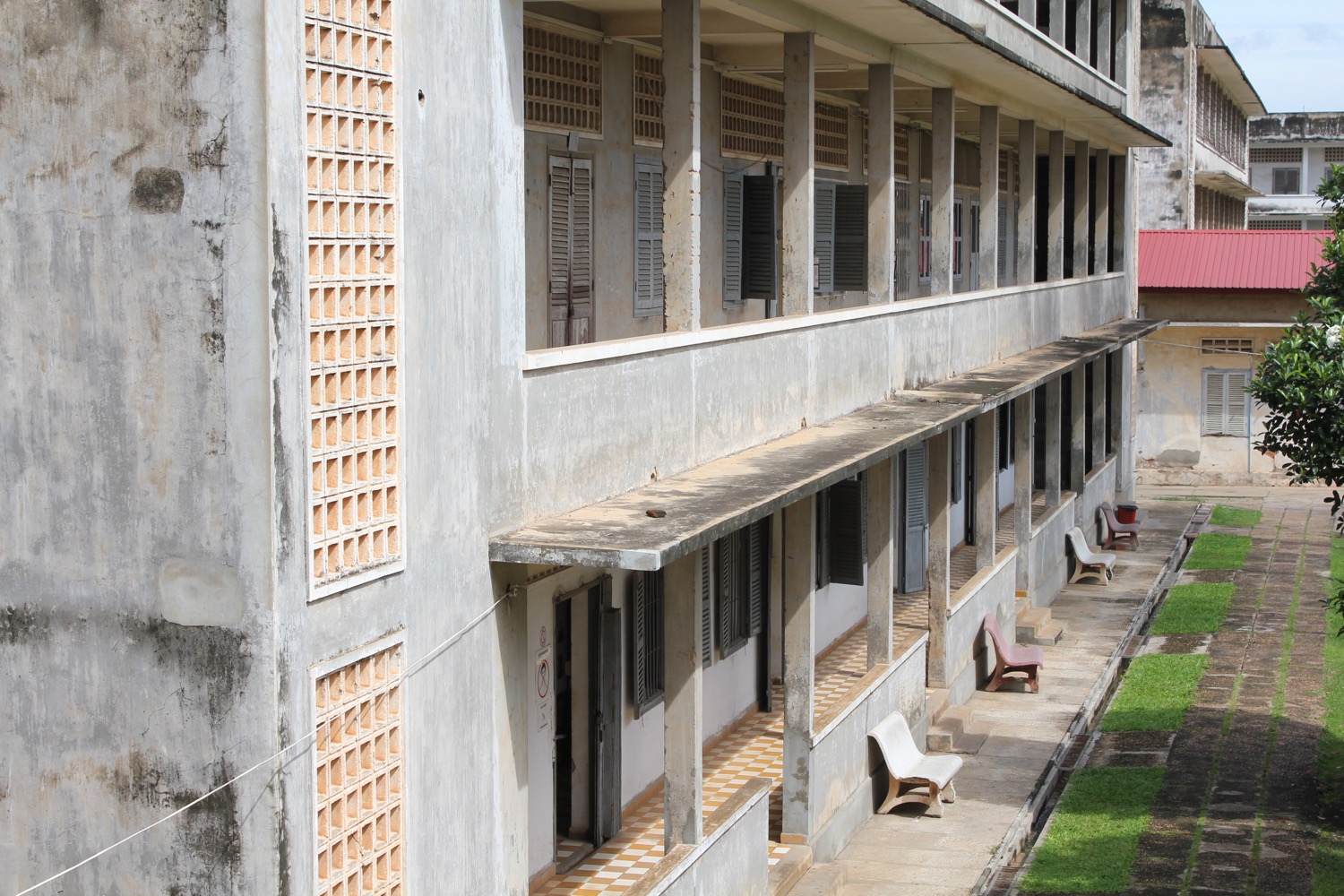
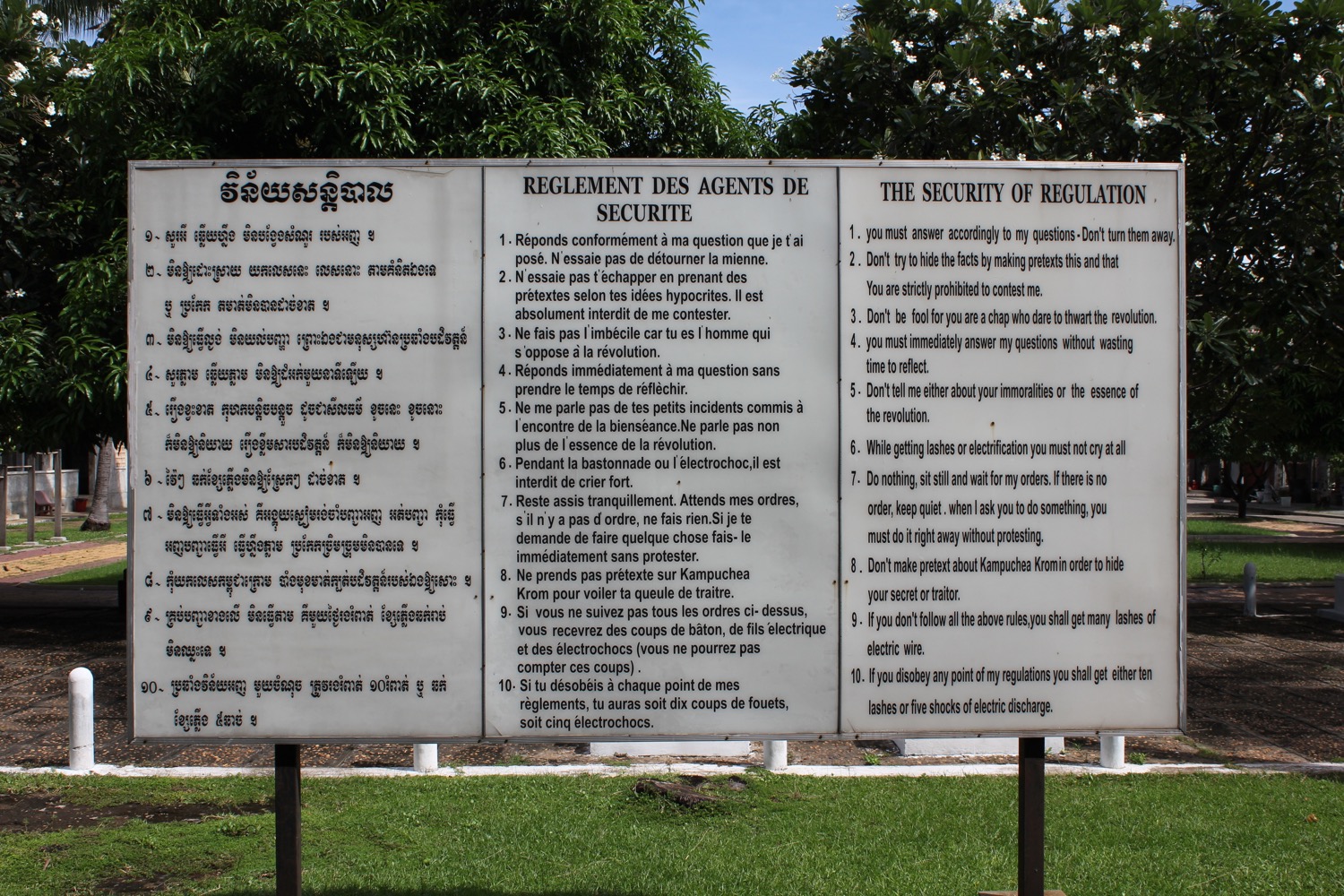
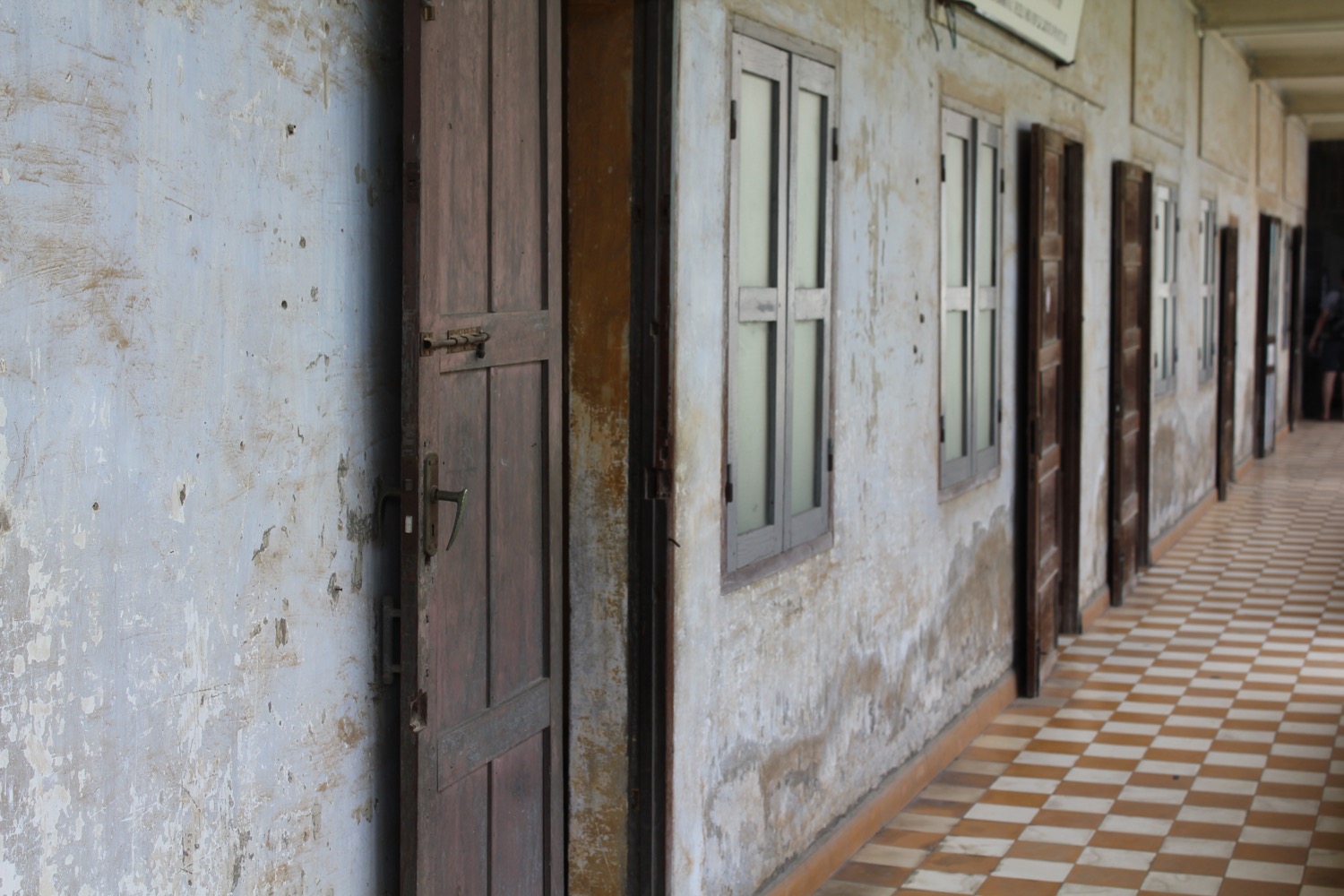
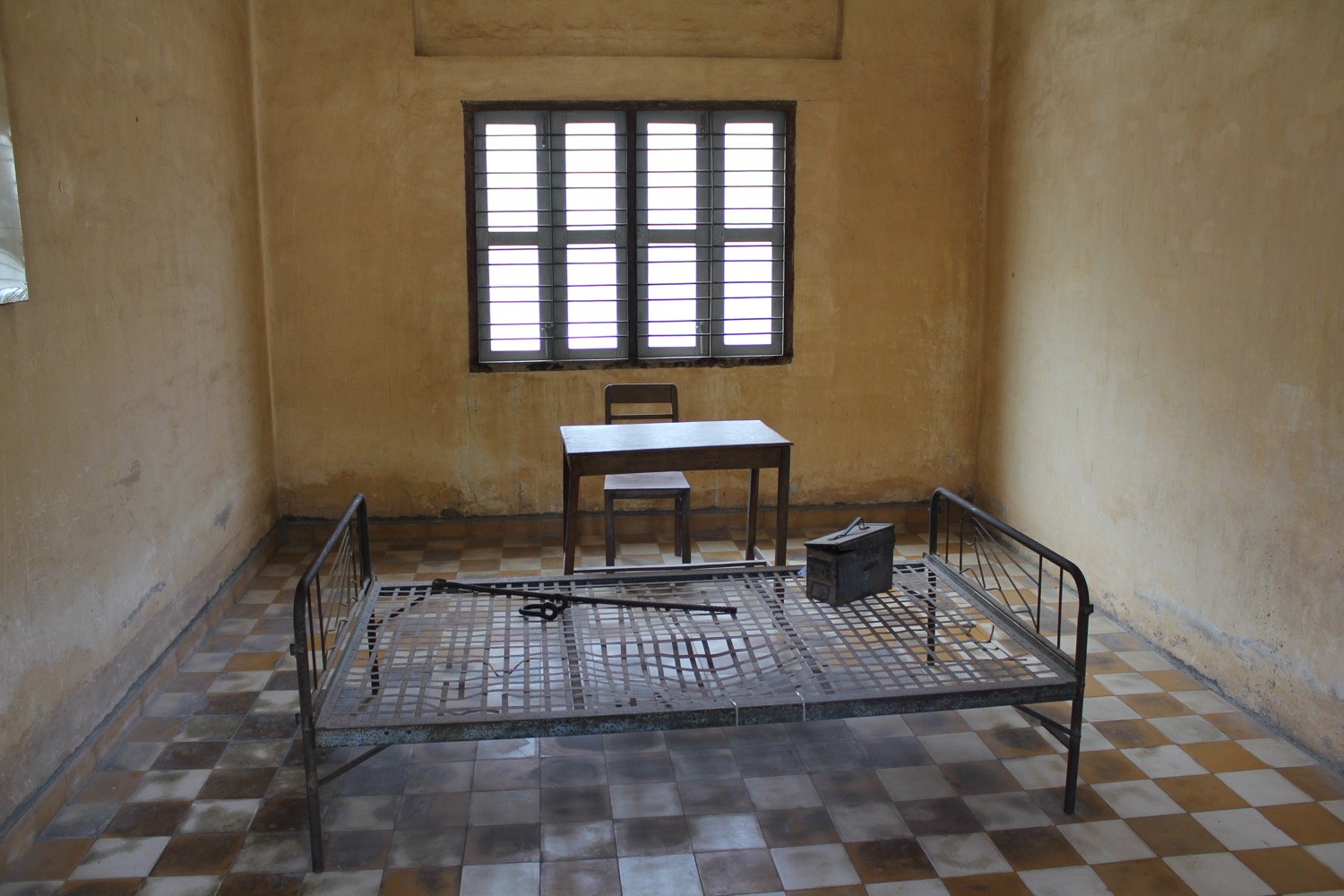

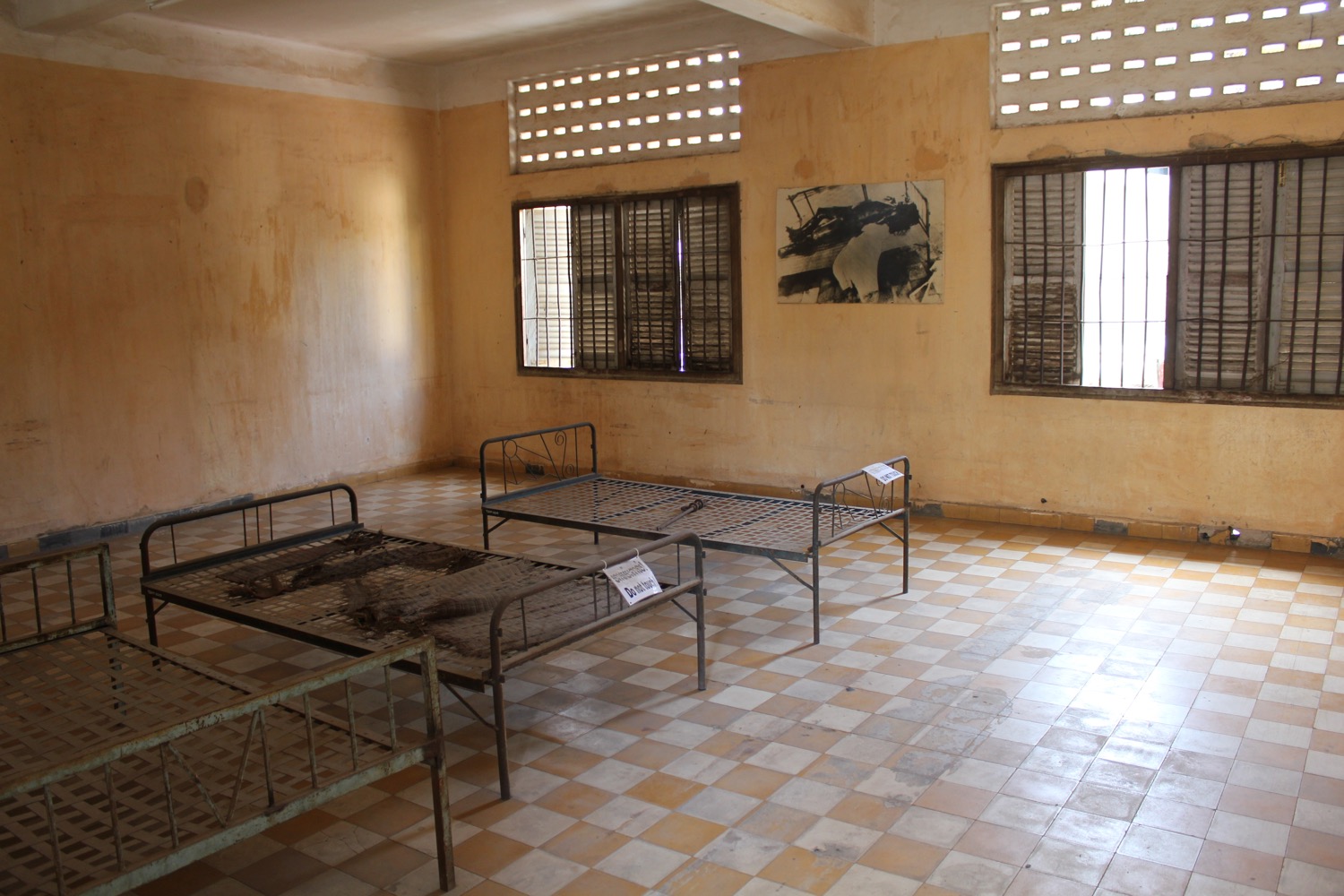
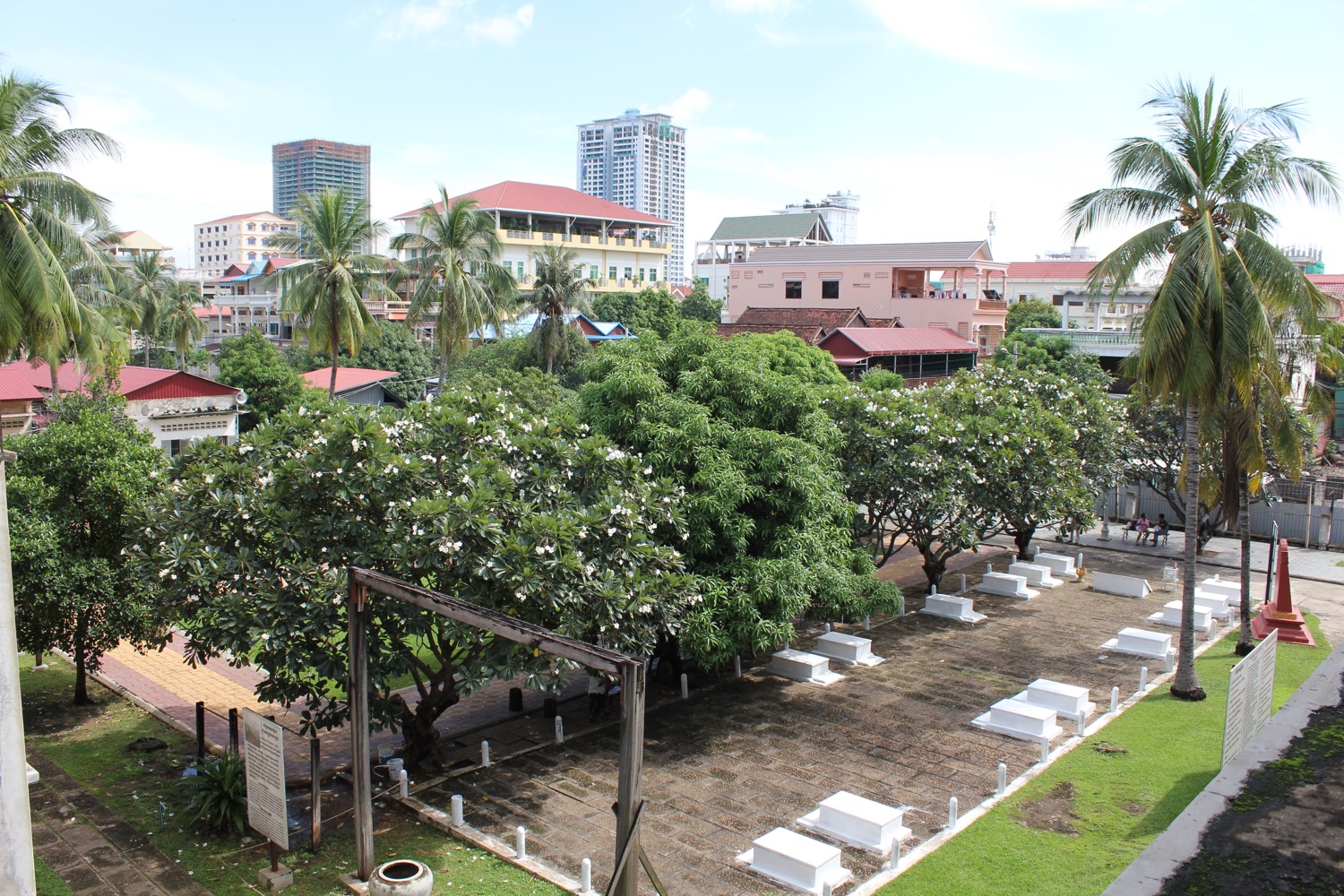
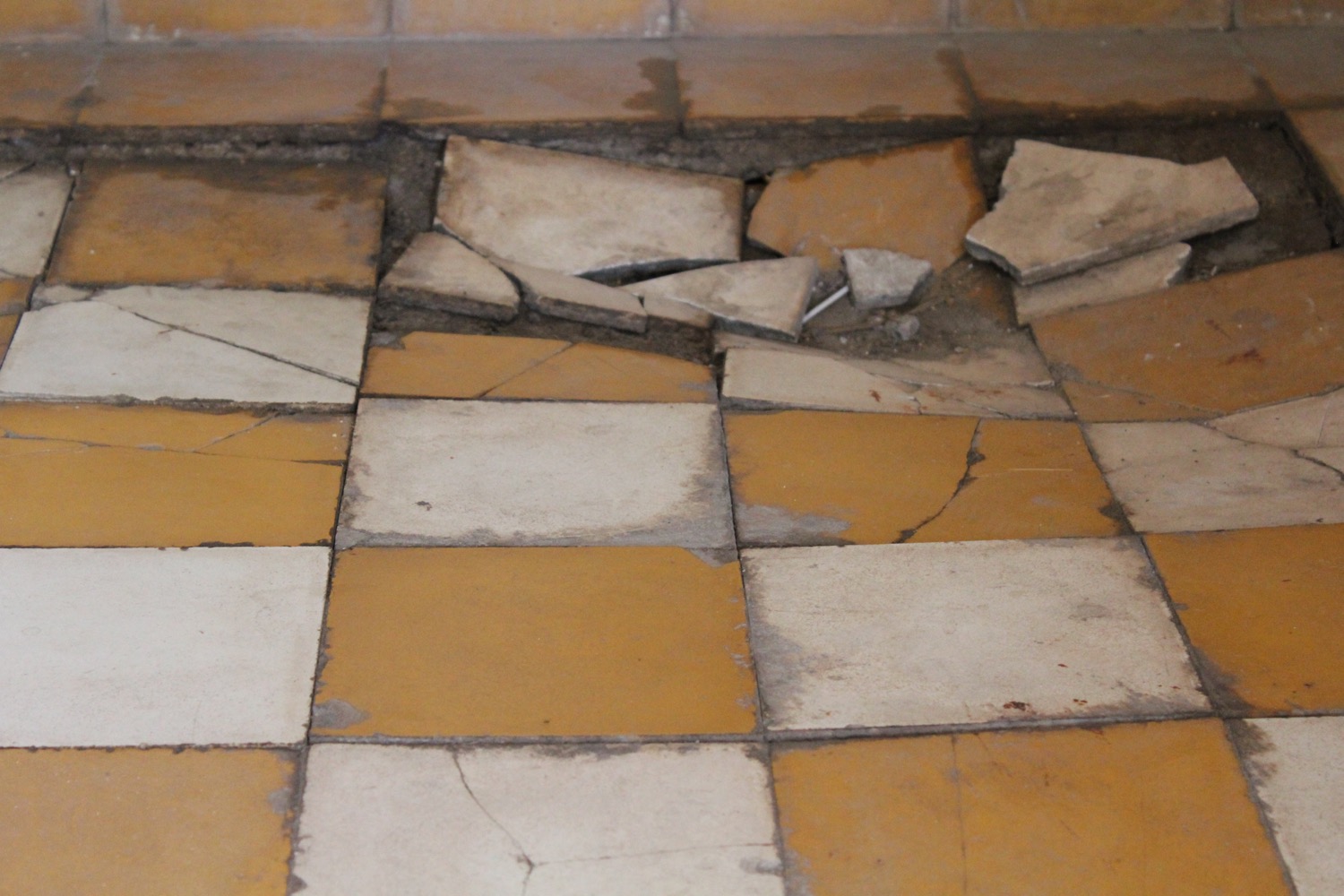

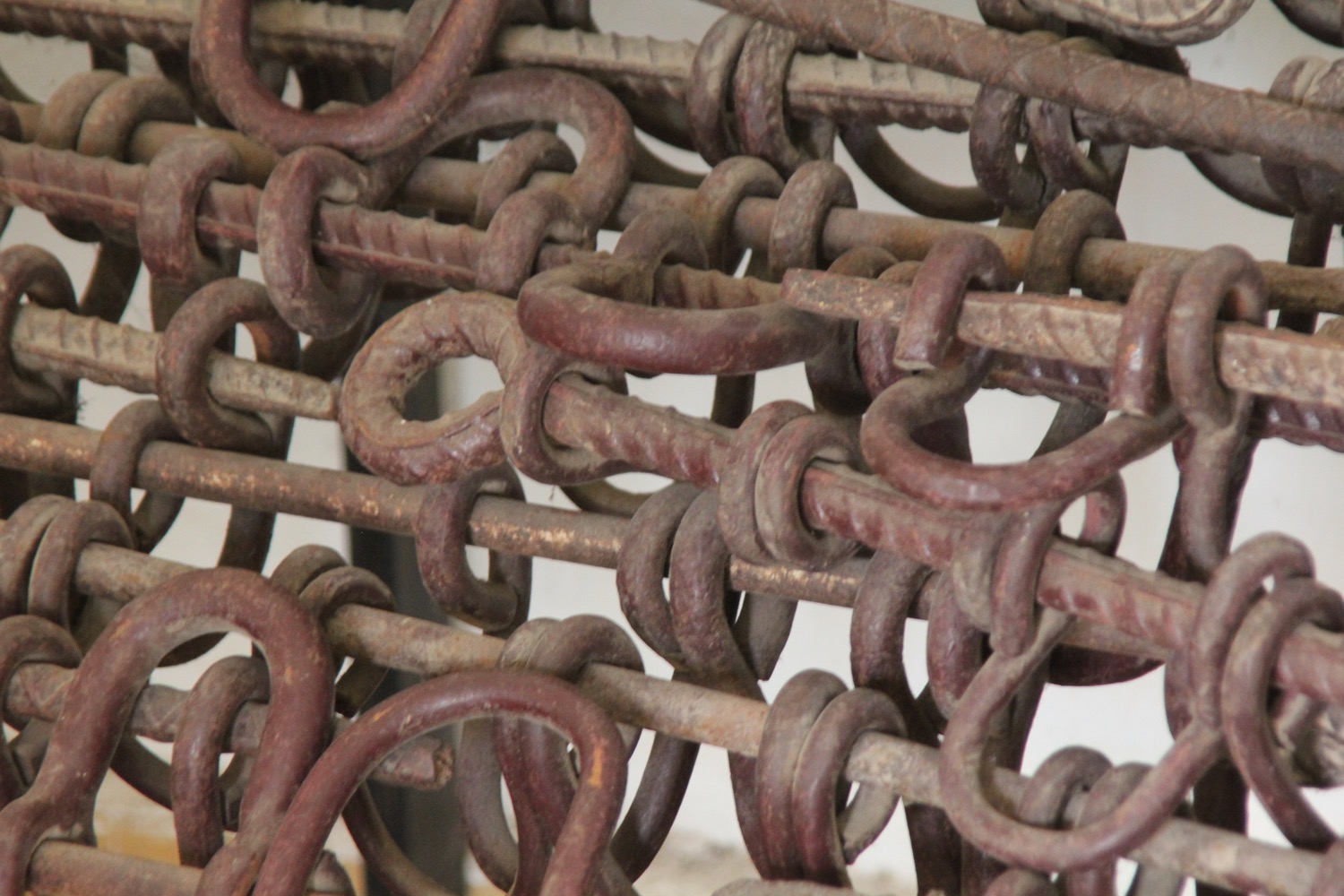
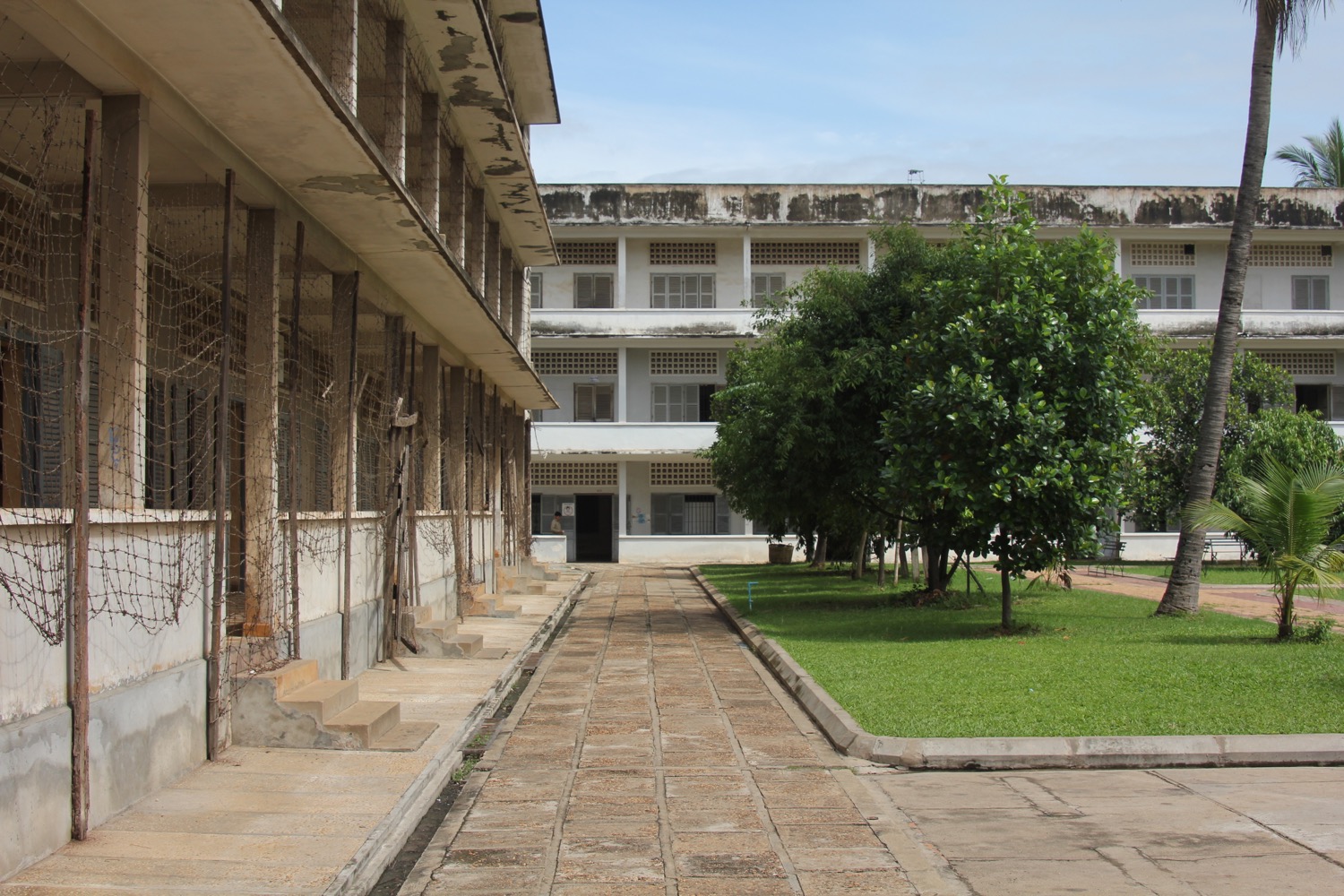

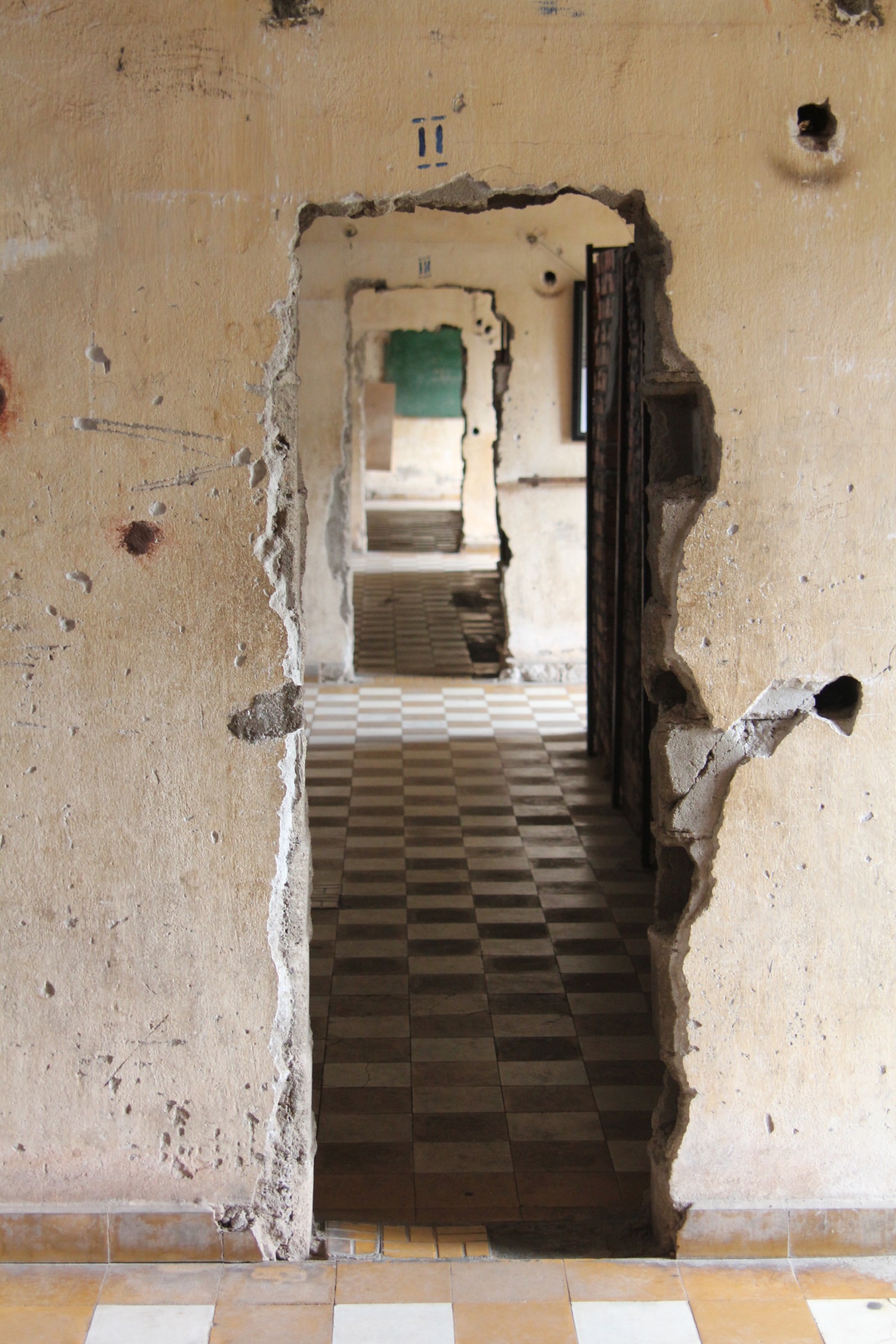


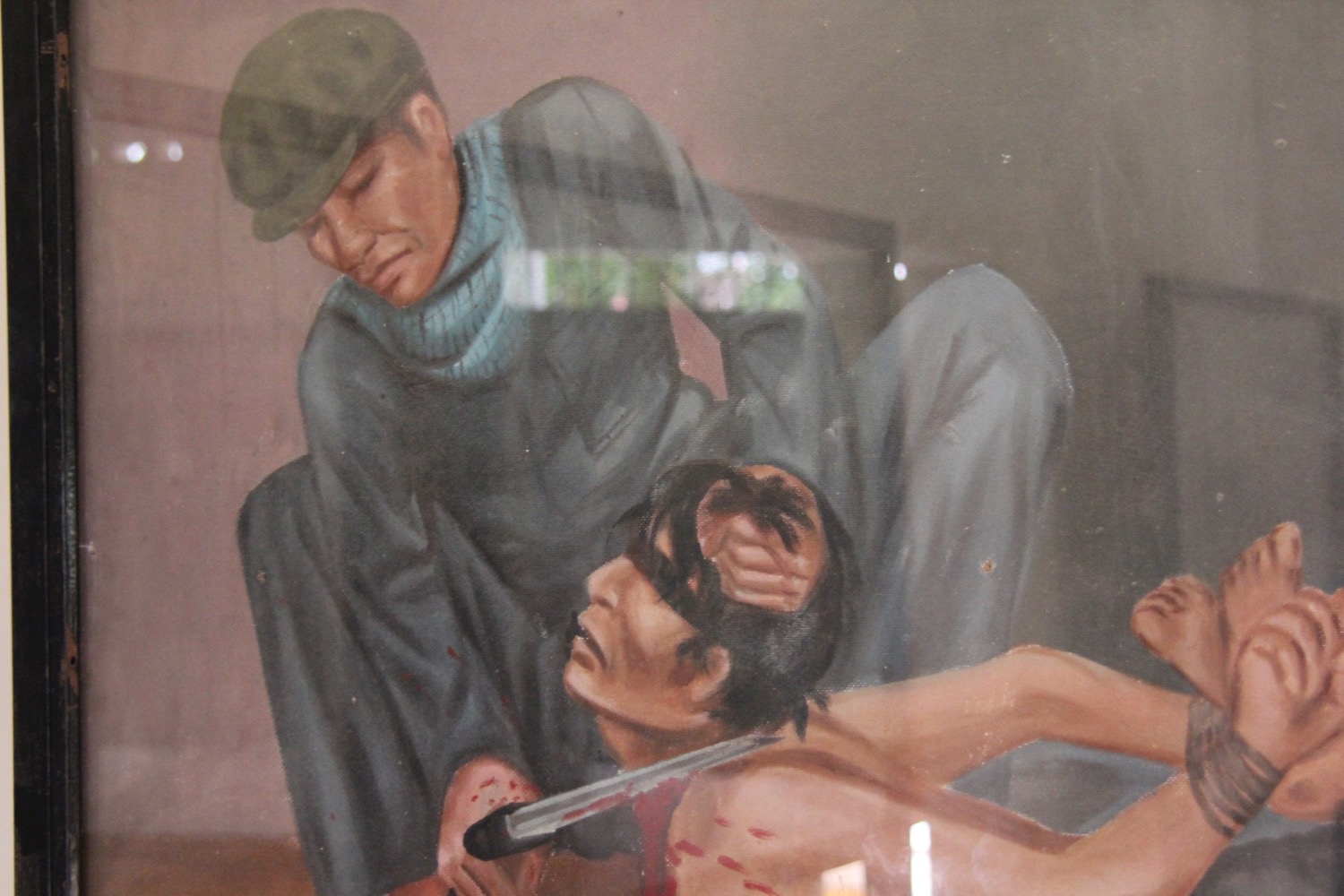


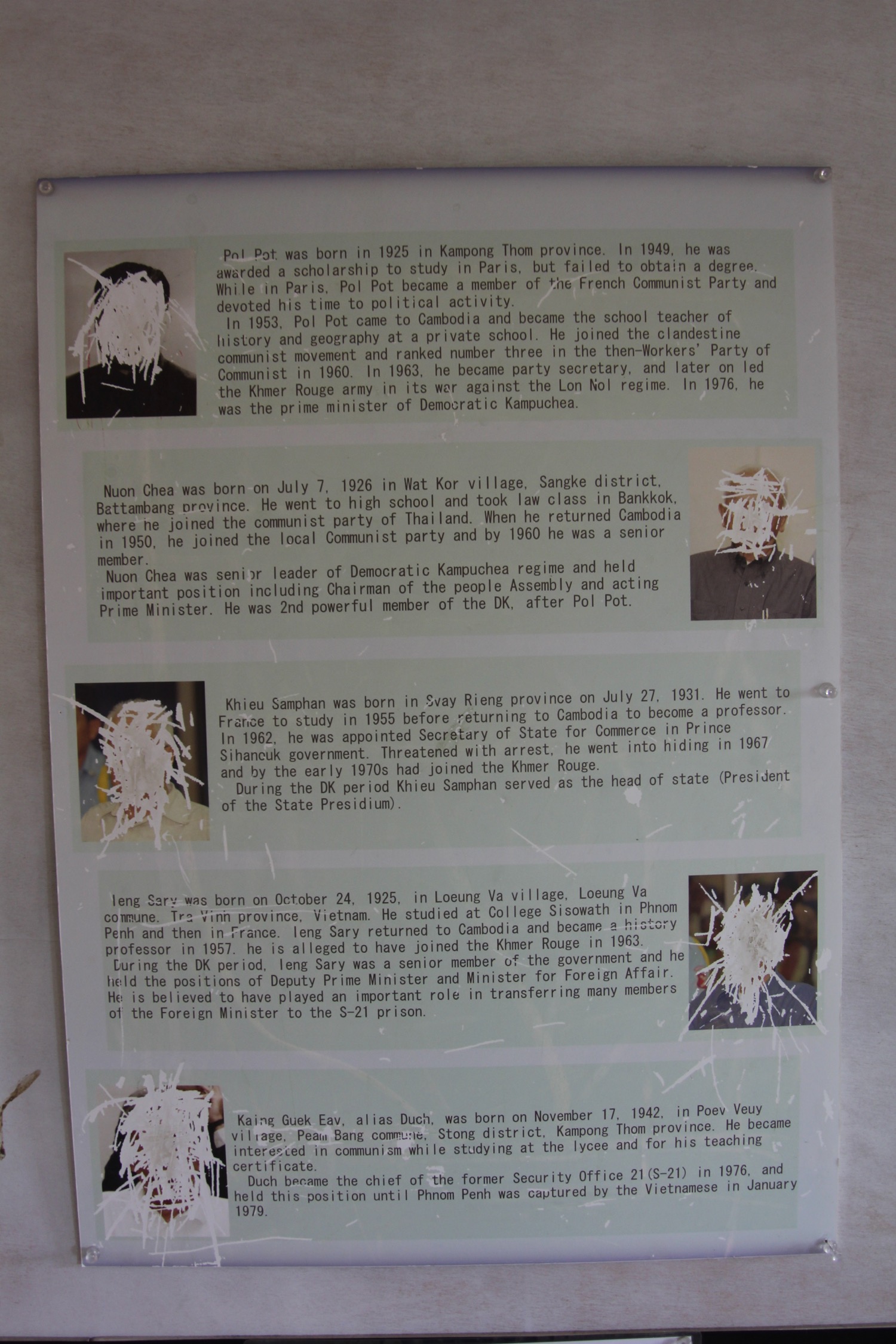
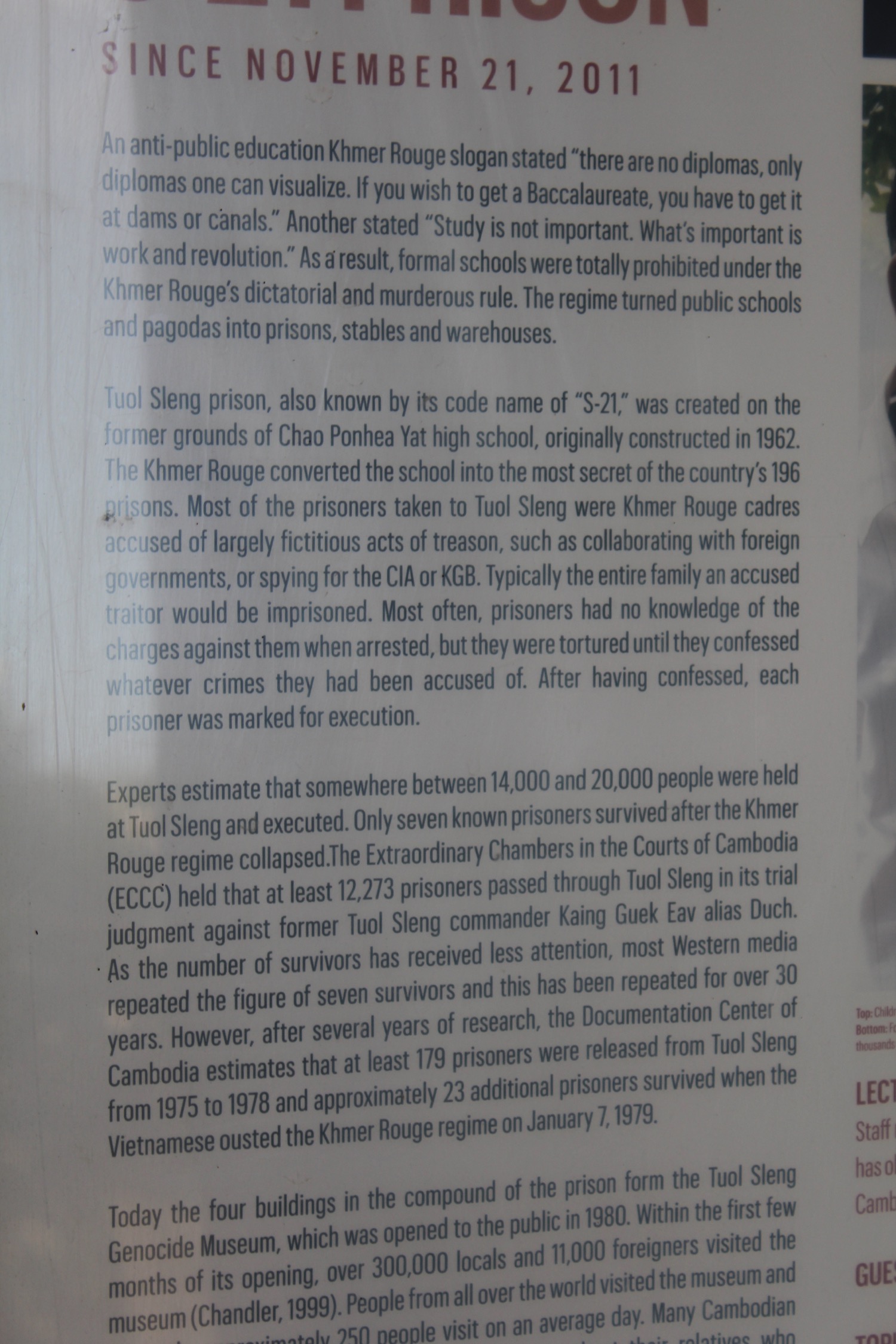
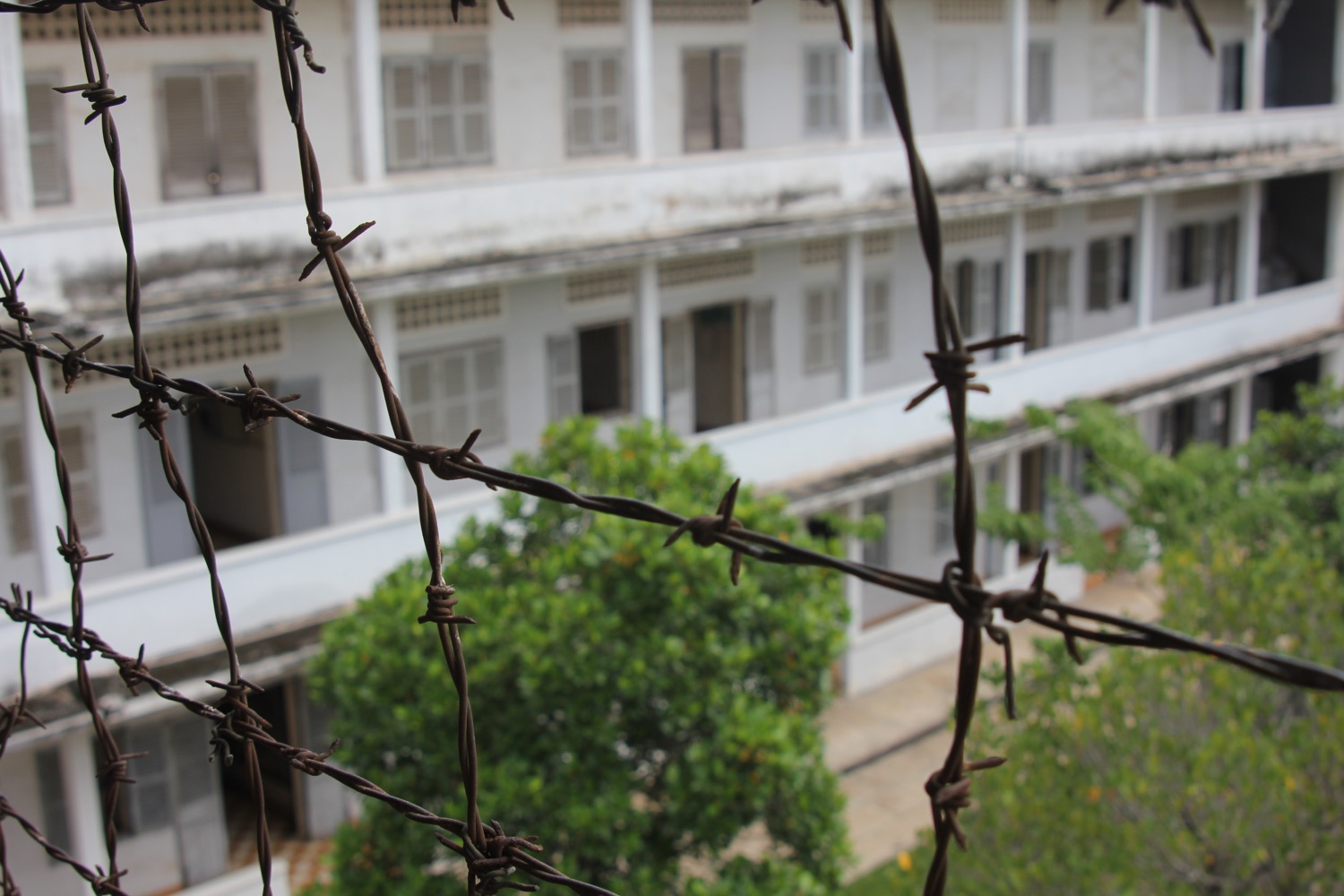

Survivors
One room in the museum houses a cabinet full of skulls from prisoners who were executed or experimented on. Only seven people brought into Security Prison 21 survived and only a few are still alive today. I got to meet one.

Bou Meng is an artist. In fact, he created propaganda artwork for the Khmer Rouge early in the new government. But the deeply paranoid regime turned on him and his wife and locked them up. When you sit down and meet him, he’ll pull out a picture of his wife that he painted. She was tortured and killed before his eyes. Her threat was cut open.
He’ll remove his shirt and show you the scars on his back.
The BBC spoke to him as well. There he stated—
A small ammunition box served as a toilet. “If any waste spilled out we had to lick it from the floor,” he says.
Bou Meng still remembers the oppressive stench in the air. “At first I thought it was something like dead fish or mice because I had never smelt rotting human flesh before.”
Meng’s artistic skills kept him alive. A prison guard known as Duch noted his ability and tasked him with creating paintings of Pol Pot and eventually Marx, Lenin, Ho Chi Minh and Mao.
Meng survived. Millions did not. Duch, along with other Khmer Rouge leaders were sentenced to life in prison in 2009.
CONCLUSION
Visiting places like this is so essential for understanding first-hand how evil humans can be. More importantly, these sites give us a chance to guard against being complacent with the genocides that continue today in other places against other people.




Thank you for this. I too visited S-21 and the killing fields and it still affects me. It’s been 8 years and I still can’t shower with my eyes closed.
I encourage everyone to visit places like this. It’s important to keep the memory alive.
It is a truly haunting experience walking around the former prison… also the “Killing Fields” and stupa filled with skulls at Choeung Ek…. The only thing I can compare it to is visiting Dachau.
Truly a horrific testament to man’s cruelty. How could you ever forget the pyramids of skulls, the thousands of pictures of the faces of the dead taken before they were killed. Nightmarish.
I remember one spot that even 40 years later still brought up remnants or bones, scraps of clothing. Terrible to see, but very important.